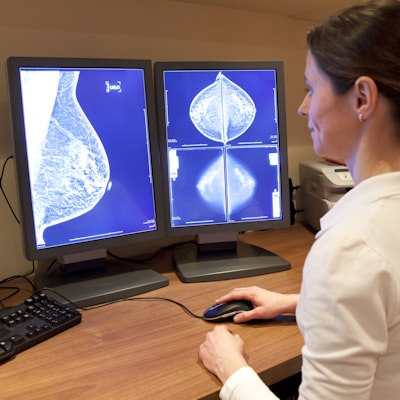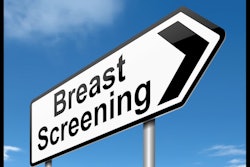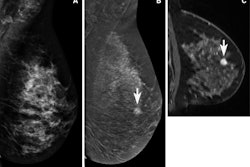
About seven in 10 women prefer contrast-enhanced mammography (CEM) over MRI when it comes to supplemental breast cancer screening, according to research published June 30 in the Journal of the American College of Radiology.
After performing an analytic hierarchy process analysis, a team led by Wendie Berg, MD, PhD, from the University of Pittsburgh and Magee-Womens Hospital of UPMC found that women who had undergone screening via both modalities often preferred CEM, citing less exposure to noise and claustrophobia as reasons.
"Claustrophobia remains a major barrier to tolerance for MRI," Berg told AuntMinnie.com. "For women in whom breast positioning was the biggest issue, CEM was still preferred, but these women were more likely than others to favor MRI."
Supplemental imaging has become an area of increasing interest for breast imaging. The U.S. Food and Drug Administration (FDA) in March amended its mammography regulations, requiring facilities to inform all women of their breast density. Additionally, the American College of Radiology (ACR) in May updated its guidelines for screening higher-than-average risk women with MRI.
The researchers noted that CEM and MRI have a higher cancer yield than conventional breast ultrasound. However, previous studies suggest that CEM has similar detection to MRI with the added benefit of improved specificity. Prior studies also suggest that CEM is better tolerated among women.
Berg and colleagues wanted to explore patient preferences for CEM versus MRI using an analytic hierarchy process-based model. This modeling structures the decision-making process by separating patient-reported problems into hierarchical criteria. These criteria are compared with one another in pairs to determine their importance.
The researchers collected data from 222 women, 189 of whom reported having a personal history of breast cancer. They identified the following criteria: breast compression and positioning, noise level, claustrophobia, comfort and tolerance of IV placement, experience from the contrast injection and dye, and overall stress level. The team also asked the women to compare the two alternative imaging tests with respect to these criteria.
The group found that overall, 70.7% of respondents (n = 157) preferred CEM to MRI. Additionally, the team found that breast positioning was the most important aspect for one-third of respondents.
| Importance of criteria points for women undergoing CEM or MRI (out of 222 respondents) | ||
| Criterion | No. of women from total | Percentage of total |
| Breast positioning | 74 | 33.3% |
| Overall stress level | 39 | 17.6% |
| Claustrophobia | 38 | 17.1% |
| IV line placement | 37 | 16.7% |
| Indifference | 13 | 5.9% |
| Contrast injection | 11 | 5.0% |
| Noise level | 10 | 4.5% |
The researchers also found that CEM was most prevalent for respondents who emphasized claustrophobia at 97% (37/38). They also reported that CEM preference was least prevalent for respondents who emphasized breast positioning at 54% (40/74).
The researchers suggested that based on their results, points that influence decision-making by patients on choosing CEM or MRI include the following: allergy to iodinated or gadolinium-based contrast, inquiring about claustrophobia, and tolerance for breast compression.
Berg told AuntMinnie.com that the team is working to implement screening CEM clinically, saying the modality "seems to be" a relatively low-cost alternative to MRI.
"This work is part of a larger study of screening CEM in women with a personal history of breast cancer, funded by The Breast Cancer Research Foundation, but we also included women at higher risk who were part of another study of screening CEM funded by the Pennsylvania Breast Cancer Coalition," Berg said. "We do need insurance coverage and physician and staff training to make CEM a widespread option."
The study can be found in its entirety here.




















